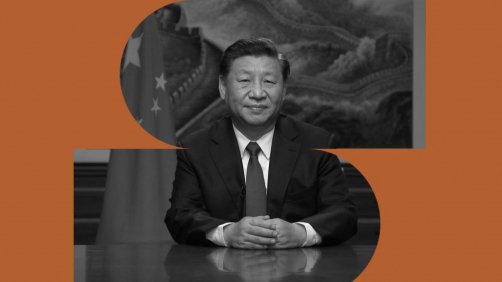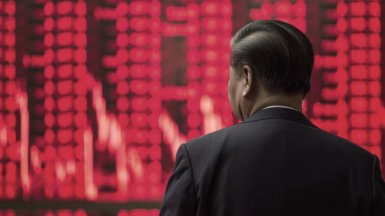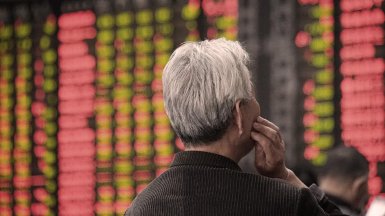While China weathered the Covid crisis better than anyone, the new year presents its own challenges: de-risking the financial system, supporting a domestic recovery, addressing a growing wealth gap, and fostering innovation. The way ahead will be more difficult, less predictable, and highly contingent on complex policy choices. The risk of a policy error is high.
Edmund Ng (CIO, Eastfort Asset Management), Louis-Vincent Gave (CEO, Gavekal Capital), and Sian Goh (Head of Research and Strategy, Dymon Asia Capital) joined us to unpack the key developments which could influence China and global markets in 2021.
Below you can read important highlights from our discussion. Here’s a preview:
1. Don’t underestimate the extent to which 1989 was a traumatic event for this generation of Chinese leaders (LG)
2. China has moved from a vicious cycle to a virtuous one, sucking in global capital (EN, LG & SG)
3. Beijing’s deleveraging campaign will lead to more defaults in 2021; risk of policy error is high (EN & SG)
4. The market cap of semiconductors now exceeds the market cap of energy sector; the market is telling us something (LG)
5. China’s one-child policy constrains military options against Taiwan (EN & LG)
6. Every Chinese company fears becoming the next Huawei (LG)
7. America will aim to restrict the flow of capital to China (LG)
8. China is putting trade treaties in place to subvert American action (SG)
9. EM risk parity is working well, but more dispersion is coming (SG)
10. The biggest risk to China comes from the environment (LG)
Let’s jump in.
1. Don’t underestimate the extent to which 1989 was a traumatic event for this generation of Chinese leaders
Background: What’s widely understood is that Tiananmen Square protests in 1989 were about demands for freedoms and democracy. But that’s not how Chinese leaders view it. They believe students were angry because inflation was running at 25 percent.
Why it matters: This historical experience drives policy settings. If you're a Marxist Chinese that lived through 1989, your belief is inflation equals social instability equals revolution. And that’s the worst thing that can happen because the true legitimacy of the Chinese Communist Party rests on its ability to deliver social stability.
This is one of the reasons China didn’t stimulate aggressively. As China’s central bank governor Yi Gang put it, “Aggressive stimulus may bring inflation risks and cause too rapid an increase in the macro leverage ratio.”
The bottom line: The only place you have inflation hawks anywhere in the world now is China. The PBOC is the new Bundesbank. Chinese government bonds are the new German bunds.
2. China has moved from a vicious cycle to a virtuous one, sucking in global capital
Fact: At a time when most central banks are cutting interest rates and introducing more monetary easing, China is going in the opposite direction. The pandemic has made Chinese bonds even more attractive. Capital flows to where there’s yield, just like water flows downhill. Foreign inflows have surged to a record.
What to watch: The only way to stop this capital flow is if real yields go up in the Western world but that seems extremely unlikely. In fact, real yields are going to plummet even more in the next six months, because of the year-on-year increase in inflation. The other option to curtail capital flow is for real yields in China to collapse. But that means there would have been a massive bull market in Chinese government bonds.
Between the lines: There is a positive feedback loop between bond market inflows and an appreciating exchange rate. More inflows push the renminbi up, and a rising currency attracts more inflows. China is now in a virtuous cycle and a rising currency is a show of strength. It’s a way to basically say to the US, we didn’t suffer compared to you.
3. Beijing’s deleveraging campaign and push to impose more market discipline on debt issuers will lead to more defaults in 2021; risk of policy error is high
The rub: A large part of the corporate debt refinancing wall in the first half of next year is property developers. They are facing a liquidity squeeze on the back of tighter regulations.
Why it matters: S&P currently rates $181 billion worth of Chinese developer bonds, meaning the sector makes up the majority of the Asia high-yield bond market. There is high probability of credit spread widening that will affect other Asian high yields. A major default would send shockwaves to other sectors and expose systemic weaknesses in the financial system.
What to watch: The pace of credit growth (total social financing) and regulatory tightening will be key next year. Developers are completing more units and lowering prices in order to sell and raise liquidity. Deflationary forces from the sector contracting could build up. China’s inflation is at the lowest level in 11 years.
What they’re saying: No one should kid themselves that the PBOC is going to be the best at managing a crisis. But the chance of economic mismanagement is reduced with lower growth targets.
4. The number one information from the market this year: the market cap of semiconductors now exceeds the market cap of energy sector
Go deeper: The market is telling us that the commodity of the future is the microchip. At the same time, the leadership of the manufacturing of semiconductors is moving from the United States to Taiwan. Intel announced it won’t be able to produce 7nm chips till at least 2023. Meanwhile, TSMC is already producing 7nm chips and will be producing 3nm chips by 2023.
Why it matters: Taiwan was always a problem. It was a problem when China and the US got along, when Taiwan produced bicycles and cheap plastic toys. Now, all of a sudden, Taiwan is the leading producer of the world’s most important commodity to drive future growth. The country is the real flashpoint in US-China relations and the key geopolitical challenge of our time
5. China’s one-child policy constrains military options against Taiwan
Some context: During the time of major wars (1870, 1914 and 1940), people used to have lots of children. If five boys from a family went to war and three came back, the parents would mourn the other two but at least they had three boys left.
The big picture: Wars are fought by excess young men. When you only have one child, you can’t send them off to war. It’s too much of an ask. It risks revolution and social upheaval.
So: China is unlikely to take Taiwan by force. The one child policy constrains China’s military options. They also need to prioritize internal affairs such as addressing the growing wealth gap.
Good news: Beijing will probably just wait for another Taiwanese election (2024) to see if they can politically influence change and control like they did in Hong Kong.
6. Every Chinese company fears becoming the next Huawei
Why: The US has strangled Huawei through restrictions and sanctions. Chinese companies across sectors are starting to believe they can no longer afford to be dependent on a US company either.
What they’re saying: Chemical and specialty steel companies and others in the industrial process are saying they don’t want to buy from the US anymore. They worry that the US government will just unilaterally decide to prevent US producers from selling to China.
Get smart: It used to be that every company would only look at price and quality when placing orders. That’s what drove every decision. Now we’re moving to a world where the first thing that matters is the security of supply
The silver lining: This helps China’s dual circulation strategy by promoting domestic market and industry.
7. America will aim to restrict the flow of capital to China
The big picture: At some point, the Fed will have to choose between (a) adopting yield curve controls to prevent bond yields from going up, and thereby crushing the dollar, or (b) deciding to preserve the value of the dollar and letting bond yields go up.
But: Government cost of funding would explode if yields sustain higher. So, the likely scenario is yield caps when inflation runs above target. As the dollar decline accelerates because of capital flight, the Treasury will have no choice other than to put capital controls.
The rub: Despite index inclusion, international investors may never own as much China bonds as they do of other emerging markets. Foreigners currently own about 3 percent of China’s onshore bonds.
8. China is putting trade treaties in place to subvert any American action
Fact: In November, China and fourteen other countries including South Korea, Japan, Australia and New Zealand signed the Regional Comprehensive Economic Partnership (RCEP). This forms the world’s largest trading bloc, covering nearly a third of the global economy. The deal excludes the US, which withdrew from a rival Asia-Pacific trade pact in 2017.
Between the lines: China’s playing the multilateral game better than US. Their aim is to get all the trade treaties in place to subvert any American action and avoid being ganged up upon. By bringing countries into her economic embrace, China will preempt any country from making a ruckus about their human rights issues.
What to watch: This also means that China is okay with a stronger currency because they need to buy stuff from their trading partners.
9. EM risk parity is working well, but more dispersion is coming
The big picture: The amount of money and liquidity in the world has made investors insensitive to valuations, real yields, and a host of other risks. The dollar is being used a global funding currency and investors are positioned in EM risk parity which is working well.
The rub: Asian countries want to pull in more capital but do not want currency strength. Central banks are starting to intervene and talk down their exchange rates because they don’t like monetary conditions tightening. There should be a lot more dispersion across Asian markets next year.
Why it matters: Janet Yellen is coming in as the new Treasury secretary in January and she is comfortable with a weaker dollar. She may call out EM countries as currency manipulators if their central banks keep intervening.
Still: It’s easier to be risk on for now.
10. The biggest risk to China comes from the environment
Background: Historically, the biggest risk to China has not been something external. It is always internal. Namely, floods which led to food shortages and price spikes. This was one of the most common reasons for Chinese emperors to be overthrown. The population would starve if there was one bad harvest and revolt.
Go deeper: China was built around its two main rivers. And in the past 30 years, the economic center of gravity has shifted massively from along the two rivers to along the coast. This means the scope for environmental problems are much greater.
But: What’s different this time is that China is not as poor as it once was. We are no longer in a Malthusian economy. Swine flu killed half of China’s porks, pork prices more than doubled, and yet people are not starving in the streets.
Still: The risk remains. China is prone to flooding and coastal areas are more densely populated. This has the potential to be a black swan event.

Photo: SCMP






